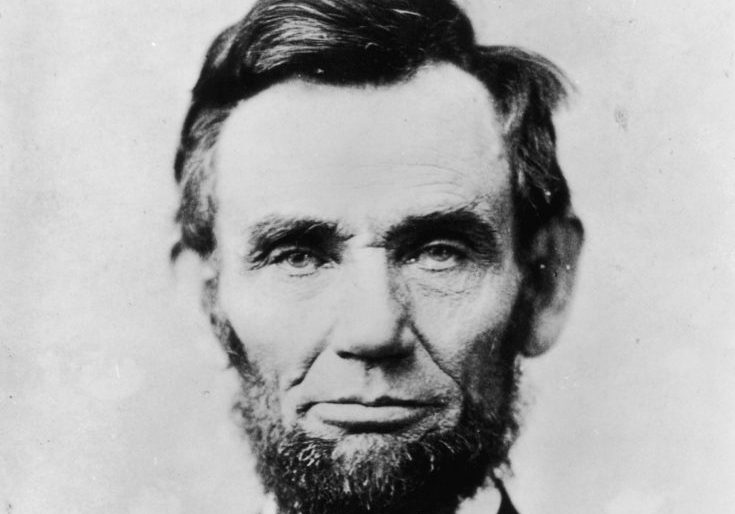The last few years have brought a new phenomenon to the history bookshelf—the cable news star as amateur historian. Bill O'Reilly is perhaps the most famous example of this, with his Killing <blank> series, written with Martin Dugard. The model is pretty well known by this point: A big name partners with a "researcher," usually a ghostwriter, and the pair use the famous name—and their media platform—to get a raft of free publicity for a propulsively written tale about some forgotten episode of American history, usually involving a great battle from a war.
At first glance, Jon Avlon's Lincoln and the Fight for Peace appears to be of that genre. Avlon, a CNN contributor and former Daily Beast editor, examines Abraham Lincoln and his approach to peacemaking by focusing on the president's activities in the eventful last few months of the Civil War. He makes clear that while Lincoln waged the war relentlessly, he had a vision for a lasting peace afterwards, a challenging task given the bloodshed of the long war.
Avlon shows that Lincoln was determined to make the South and the North friends again, despite the bitterness. He frequently gives examples of Lincoln's forgiving philosophy, quoting Lincoln's favorite biblical passage, "Let us judge not, lest we be judged." He also reminds us of Lincoln's lesson that "it is an old and true maxim that a drop of honey catches more flies than a gallon of gall. So with men, if you would win a man to your cause, first convince him that you are his sincere friend. Therein is a drop of honey that catches his heart, which say what you will, is the great high road to his reason."
Along the way, Avlon recounts some entertaining episodes, such as incoming Vice President Andrew Johnson's atrocious drunken speech at Lincoln's second inaugural. (Lincoln's first vice president, Hannibal Hamlin, was not on the ticket in 1864.) As Avlon writes, "before being pulled from the stage, Johnson capped his performance by holding a Bible aloft and kissing it with an audible smack of the lips." This performance led to the joke circulating at the time that Caligula's horse was more dignified than the country's new vice president. This unfortunate episode might have been forgotten by history, had Johnson—who did not share Lincoln's forgiving nature, nor his skill as a politician—not replaced Lincoln as president a few short months later.
Avlon also shares with us numerous amusing stories about Lincoln and the telegraph office, which was not only a great source of information, but also a favorite hangout. As Avlon notes, "Lincoln found solace in telegraph offices. They were a refuge from the grasping demands of the presidency." Not only did it keep him up to date on the latest developments, but it also kept him away from the White House, not to mention from his difficult wife, Mary Todd Lincoln. At the telegraph office, Lincoln could hang out with junior military officers and favored aides, telling jokes and reading passages from one of his favorite humorists, Petroleum V. Nasby.
Lincoln read humor at the White House as well. Once when his ally Isaac Arnold came into the White House and found the president laughing at the writings of Artemus Ward, Arnold professed amazement that Lincoln could do so despite a recent battlefield setback. In response, Lincoln said, "Mr. Arnold if I could not get momentary respite from the crushing burden I am constantly carrying, my heart would break!"
All this is to say that Lincoln was a special political talent, one who could look at the big picture of what he was trying to accomplish postwar, and had a vision for what peacetime America should look like, even as his successor and some of his later successors did not. This is relatively well-known, although Avlon tells the tale entertainingly enough. He even displays a good use of adjectives to give a sense of some secondary historical characters, as in this passage: "Behind the president were radical Republicans, reactionary Democrats, and members of his cabinet, including the hawk-nosed Secretary of State William Seward, Secretary of the Navy Gideon Welles and his terrible toupee, and the imperious Secretary of War Edwin Stanton, who stared out at the crowd from behind tiny spectacles and a mammoth beard."
Lincoln is assassinated about halfway through the tale. Following Lincoln's death, the spirit of Lincoln remains throughout the book, as Johnson botches Lincoln's plans, and as Rutherford B. Hayes and his administration end Reconstruction, allowing the evil system of segregation to emerge.
Avlon continues to use this essence-of-Lincoln approach to judge subsequent presidents at difficult times, including Woodrow Wilson and Harry Truman, about whom Avlon writes, "He followed Lincoln‘s prescription of unconditional surrender and a magnanimous peace more faithfully, if intuitively, culminating in the success of the Marshall plan."
The point of it all is to get us to today, to employ Lincoln's message in a plea for unity in our troubled times. As Avlon writes in his conclusion, "America is North and South, White and Black, Republican and Democrat. We are laughter and loss, Saturday night and Sunday morning, Old Testament and New. Liberty and equality are not opposites and inevitable conflict, but act in concert under the practical balance of the union. In the end, even war and peace are intimately entwined." It's a nice message to be sure, but there's an underlying problem. Avlon correctly identifies the ideal destination, but we may lack modern-day Lincolns to get us there.
Lincoln and the Fight for Peace
by John Avlon
Simon & Schuster, 368 pp., $30
Tevi Troy is a senior fellow at the Bipartisan Policy Center and a former senior White House aide. He is the author of four books on the presidency including, most recently, Fight House: Rivalries in the White House from Truman to Trump.
